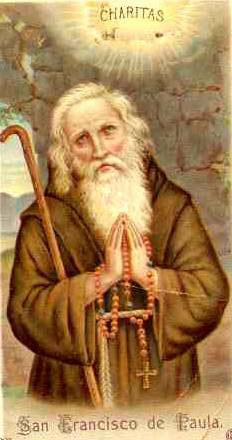Pope St. Mark
FREE Catholic Classes
Date of birth unknown; consecrated 18 Jan., 336; d. 7 Oct., 336. After the death of Pope Sylvester, Mark was raised to the Roman episcopal chair as his successor. The "Liber Pontificalis" says that he was a Roman, and that his father's name was Priscus. Constantine the Great's letter, which summoned a conference of bishops for the investigation of the Donatist dispute, is directed to Pope Miltiades and one Mark ( Eusebius, "Hist. Eccl.", X, v). This Mark was evidently a member of the Roman clergy, either priest or first deacon, and is perhaps identical with the pope. The date of Mark's election (18 Jan., 336) is given in the Liberian Catalogue of popes (Duchesne, "Liber Pontificalis", I, 9), and is historically certain; so is the day of his death (7 Oct.), which is specified in the same way in the "Depositio episcoporum" of Philocalus's "Chronography", the first edition of which appeared also in 336. Concerning an interposition of the pope in the Arian troubles, which were then so actively affecting the Church in the East, nothing has been handed down. An alleged letter of his to St. Athanasius is a later forgery. Two constitutions are attributed to Mark by the author of the "Liber Pontificalis" (ed. Duchesne, I, 20). According to the one, he invested the Bishop of Ostia with the pallium, and ordained that this bishop was to consecrate the Bishop of Rome. It is certain that, towards the end of the fourth century, the Bishop of Ostia did bestow the episcopal consecration upon the newly-elected pope ; Augustine expressly bears witness to this (Breviarium Collationis, III, 16). It is indeed possible that Mark had confirmed this privilege by a constitution, which does not preclude the fact that the Bishop of Ostia before this time usually consecrated the new pope. As for the bestowal of the pallium, the account cannot be established from sources of the fourth century, since the oldest memorials which show this badge, belong to the fifth and sixth centuries, and the oldest written mention of a pope bestowing the pallium dates from the sixth century (cf. Grisar, "Das römische Pallium und die altesten liturgischen Schärpen", in "Festschrift des deutschen Campo Santo in Rom", Freiburg im Br., 1897, 83-114).
The "Liber Pontificalis" remarks further of Marcus: "Et constitutum de omni ecclesia ordinavit"; but we do not know which constitution this refers to. The building of two basilicas is attributed to this pope by the author of the "Liber Pontificalis". One of these was built within the city in the region "juxta Pallacinis"; it is the present church of San Marco, which however received its present external shape by later alterations. It is mentioned in the fifth century as a Roman title church, so that its foundation may without difficulty be attributed to St. Mark. The other was outside the city; it was a cemetery church, which the pope got built over the Catacomb of Balbina, between the Via Appia and the Via Ardeatina (cf. de Rossi, "Roma sotterranea", III, 8-13; "Bullettino di arch. crist.", 1867, 1 sqq.; Wilpert, "Topographische Studien uber die christlichen Monumente der Appia und der Ardeatina", in "Rom. Quartalschrift", 1901, 32-49). The pope obtained from Emperor Constantine gifts of land and liturgical furniture for both basilicas. Mark was buried in the Catacomb of Balbina, where he had built the cemetery church. His grave is expressly mentioned there by the itineraries of the seventh century (de Rossi, "Roma sotterranea", I, 180-1). The feast of the deceased pope was given on 7 Oct. in the old Roman calendar of feasts, which was inserted in the "Martyrologium Hieronymianum"; it is still kept on the same date. In an ancient manuscript a laudatory poem is preserved (unfortunately in a mutilated text), which Pope Damasus had composed on a Saint Marcus (de Rossi, "Inscriptiones christ. urbis Romae.", II, 108; Ihm, "Damasi epigrammata", Leipzig, 1895, 17, no. 11). De Rossi refers this to Pope Mark, but Duchesne (loc. cit., 204), is unable to accept this view. Since the contents of the poem are of an entirely general nature, without any particularly characteristic feature from the life of Pope Mark, the question is not of great importance.
Join the Movement
When you sign up below, you don't just join an email list - you're joining an entire movement for Free world class Catholic education.

-

- Stations of the Cross
- Easter / Lent
- 5 Lenten Prayers
- Ash Wednesday
- Living Lent
- 7 Morning Prayers
- Mysteries of the Rosary
- Litany of the Bl. Virgin Mary
- Popular Saints
- Popular Prayers
- Female Saints
- Saint Feast Days by Month
- Pray the Rosary
Pope Francis’ April Prayer Intention: Using Technology to Strengthen Human Connections
Finding Peace Through Prayer in a World of Worry
Trump Administration Withholds Federal Grants from Planned Parenthood Over DEI and Civil Rights Concerns
Daily Catholic
 Daily Readings for Wednesday, April 02, 2025
Daily Readings for Wednesday, April 02, 2025 St. Francis of Paola: Saint of the Day for Wednesday, April 02, 2025
St. Francis of Paola: Saint of the Day for Wednesday, April 02, 2025 Prayer for God's Help in Daily Actions: Prayer of the Day for Friday, March 14, 2025
Prayer for God's Help in Daily Actions: Prayer of the Day for Friday, March 14, 2025 Daily Readings for Tuesday, April 01, 2025
Daily Readings for Tuesday, April 01, 2025 St. Hugh of Grenoble: Saint of the Day for Tuesday, April 01, 2025
St. Hugh of Grenoble: Saint of the Day for Tuesday, April 01, 2025- To Perceive Animals as God's Gifts: Prayer of the Day for Thursday, March 13, 2025
![]()
Copyright 2025 Catholic Online. All materials contained on this site, whether written, audible or visual are the exclusive property of Catholic Online and are protected under U.S. and International copyright laws, © Copyright 2025 Catholic Online. Any unauthorized use, without prior written consent of Catholic Online is strictly forbidden and prohibited.
Catholic Online is a Project of Your Catholic Voice Foundation, a Not-for-Profit Corporation. Your Catholic Voice Foundation has been granted a recognition of tax exemption under Section 501(c)(3) of the Internal Revenue Code. Federal Tax Identification Number: 81-0596847. Your gift is tax-deductible as allowed by law.


 Daily Readings for Wednesday, April 02, 2025
Daily Readings for Wednesday, April 02, 2025 St. Francis of Paola: Saint of the Day for Wednesday, April 02, 2025
St. Francis of Paola: Saint of the Day for Wednesday, April 02, 2025 Prayer for God's Help in Daily Actions: Prayer of the Day for Friday, March 14, 2025
Prayer for God's Help in Daily Actions: Prayer of the Day for Friday, March 14, 2025 St. Hugh of Grenoble: Saint of the Day for Tuesday, April 01, 2025
St. Hugh of Grenoble: Saint of the Day for Tuesday, April 01, 2025

